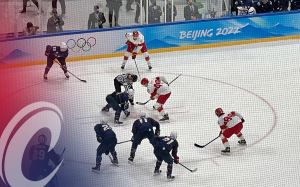With the beginning of a new season comes the excitement of getting back out on the playing surface and competing for the win. Sometimes this can lead to overexertion and muscle pulls right from the first whistle. A common muscle strain I see right out of training camp is the adductor, or groin pull.
We’ve all heard the old saying that “an ounce of prevention is worth a pound of cure….” This is very true. Following a proper off-season training program directed by professional athletic trainers and strength coaches who have intimate knowledge of your sport will go a long way in preparing you for the rigors of gameplay during the season. While nobody and no program is injury-proof, proper preparation can go a long way in minimizing the risk. Younger athletes should be encouraged to be multi-sport athletes well into their teen years before specializing in one sport (see our other blogs on long-term athletic development). Overall general athleticism will also decrease the chance of a groin injury.
Once the season begins, it is essential to maintain proper adductor health. Small pulls or tweaks can grow and continue to nag the athlete all season long. In this situation, the athlete cannot perform to the best of their ability. Exercises to maintain hip strength and mobility (different from flexibility) will help keep the groin healthy all season. Exercises such as the adductor rock, half-kneeling groin rock, and foot-elevated lateral lunge all can help with mobility. Strength exercises can include adductor side planks, Copenhagens (long or short), lateral weight shifts, and messier squats. Plan these accordingly during your in-season schedule with your athletic trainer.
Even if you prepare properly and do regular mobility and strengthening during the season, sometimes groin strains are not completely preventable. Rehabilitation for groin pulls should not be rushed. These injuries could last for weeks if not taken care of properly. If you have concerns, see a medical professional for evaluation and treatment. Treatments will include soft tissue work, myofascial release, light stretching, and strengthening as part of a return-to-play protocol. Appropriate cardiovascular exercise will also be encouraged to maintain game-level fitness while rehabbing the injury.
Don’t let a small injury sideline you before the season gets in full swing. There are a lot of games left to play this season. Treat the aches and pains properly so you don’t miss any of them.
Mike Hannegan is an athletic trainer and strength coach with ten years of experience in the NHL with the Anaheim Ducks and St. Louis Blues. He is currently the Director of the Compete Sports Performance and Rehabilitation facility inside The Rinks Yorba Linda Ice located in beautiful Orange County, CA. He can be reached at mike@competeperformance.com

